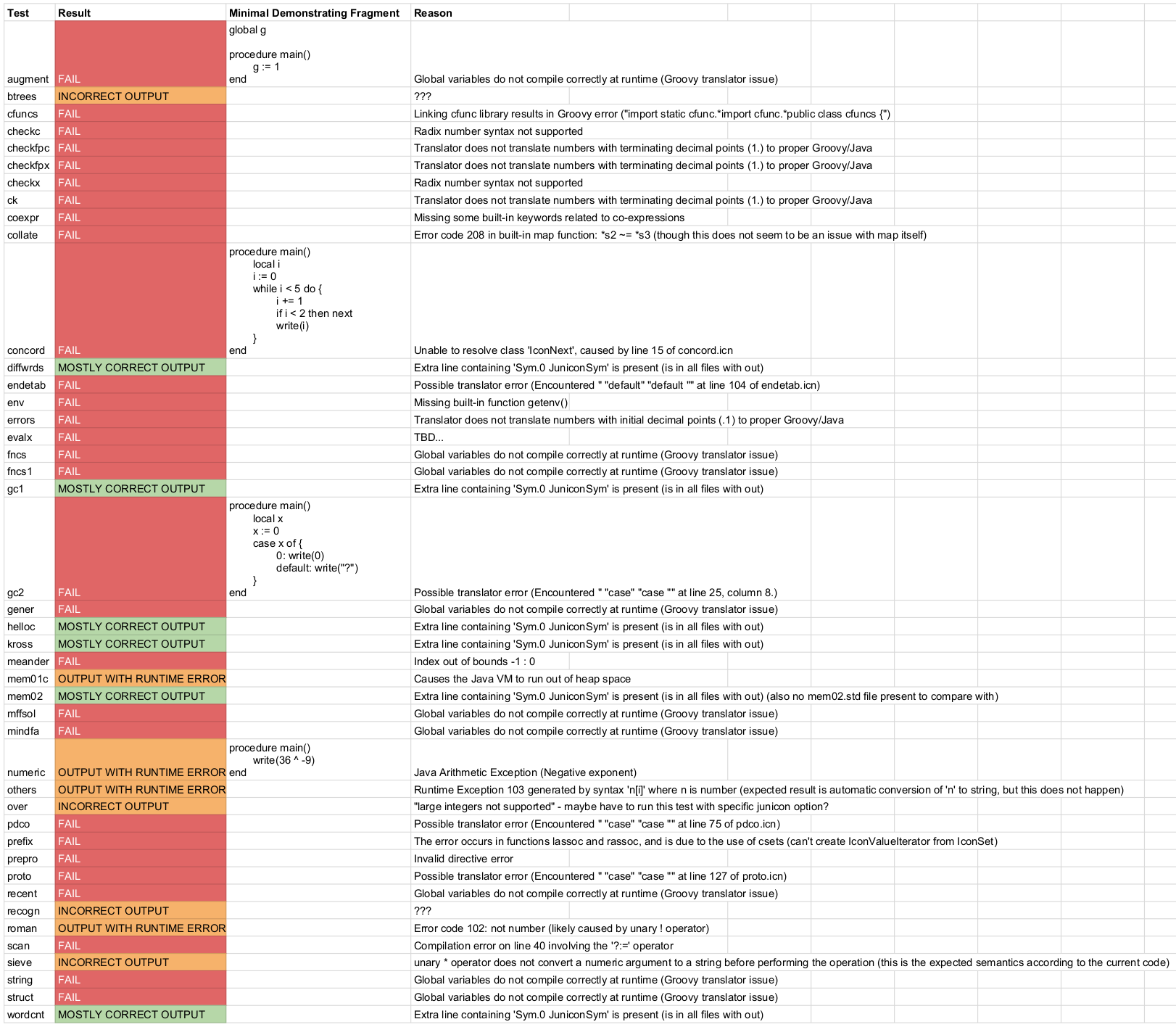 Release Party!
Release Party!
The Junicon Release Party will develop runtime system functions
and other bugfixes and enhancements for Junicon, UI's Java
reimplementation of the Unicon programming language (see junicon.sourceforge.net and http://unicon.org). The goals of this project
include one or more of:
- develop a set of Unicon-compatible Java functions to perform string
analysis and other Unicon built-ins for use in the Junicon runtime system.
- fix bugs as needed in order to pass the "tests/general" validation suite
from the Unicon language distribution
- refine documentation as needed for a public release
- develop a binary installer(s) that work for Windows, MacOS, and Linux
- publically release the software, get T-shirts, bask in glory
The intended end result of this project will be open source code that
becomes part of Junicon's public distribution. Team
members will gain open-source development experience for their resume,
and a certain measure of internet immortality. Java, Git, and related tools
will be used.
Level 0: Where the Project is At Now
- Installable and runnable from SourceForge
- Implements all the "hard stuff": generators, backtracking, etc.
- Runs about half as fast as the native Unicon VM.
- Interactive interpreter (via Java+Groovy) or compile to Java
- Easy/seamless access to Java objects/methods!
- Lacks a lot of the Icon/Unicon built-in functions
Level 1: Change the Reds to Greens
Add/fix core Icon language features for release party 1; one can advertise
this on the Icon mailing list. A previous UI undergraduate research assistant
did some of this work and produced the following spreadsheet:

It is an interesting question whether every test must pass in order to call
this project a success. Some things, like calling C functions from Unicon,
seem kind of subsumed by being able to trivially call Java from Junicon.
Then again, Java has an interface for calling C functions, so why not?
Depending on staffing level and interest, one might stop here or consider
additional level(s):
Level 2: Support Posix Facilities
Add built-in functions that Unicon adds to Icon, e.g. for
directory access and permissions, TCP and UDP networking.
Level 3: Support Database Facilities
Add built-in functions that Unicon adds to Icon for SQL/ODBC
and GDBM database access.
Level 4: Support Unicon Graphics Facilities
Add built-in functions that Unicon adds to Icon, e.g. for
2D and/or 3D graphics, each of which is worth a release party.
Level 5: Port to Android, iOS etc.
This is probably beyond the scope of 480/481. But the Unicon Master Plan calls
for it to run everywhere. And a previous undergraduate research assistant has
done some preparatory work for a libGDX port that would hit these targets.


![]()